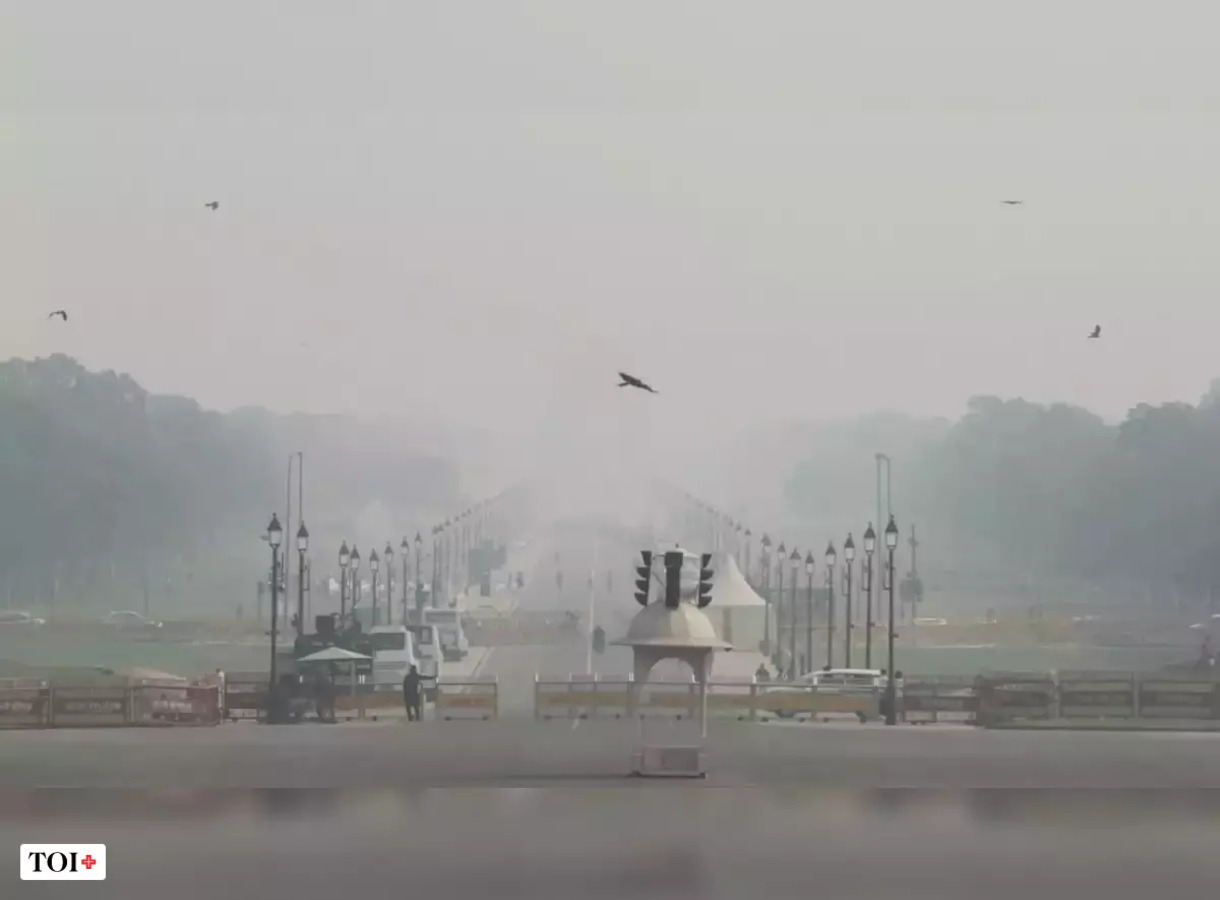This article originally appeared in Times of India
Dust aside, biomass burning contributes most to PM2.5-led air pollution countrywide. Households are bigger emitters than farmers. Industry emissions come next

Air pollution is a pervasive issue in India, with the Indo-Gangetic Plain suffering the most severe consequences. The severity of this problem is underscored by recent rankings that place Delhi, Kolkata and Mumbai among the world’s 10 most polluted cities. Mumbai’s air quality, for instance, has steadily deteriorated in the last five years, with its air quality index (AQI) frequently surpassing 200, indicating poor conditions, and sometimes even 300, signifying very poor air quality. This trend raises urgent questions about the root causes of this escalating air pollution and why it remains unmitigated.
Air pollution is a pervasive issue in India, with the Indo-Gangetic Plain (IGP)suffering the most severe Consequences. The severity of this problem is underscored by recent rankings that place Delhi, Kolkata, and Mumbai among the world, ‘s 10 most polluted cities. Mumbai, ‘s air quality for instance, has steadily deteriorated in the last five years, with its air quality index (AQI) Frequently surpassing 200, indicating poor Conditions, and sometimes even 300, signifying very poor air quality, This trend raises urgent questions about the root causes of this escalating air pollutions and why it remains unmitigated.
Colleagues and I in a comprehensive study put together data From Various Sources to develop an inventory of air pollutants in India, focusing on PM2.5, which are particles less than 2.5 microns in size and a primary concern for the country. High exposure to various PM2.5 is detrimental to health, affecting various bodily systems, particularly the respiratory system and increasing the risk of diseases such as cancer and cardiovascular ailments.
Our research indicates that India emits approximately 5.2 million tones’ of PM2.5 annually, not accounting for bust form land and construction. Astonishingly,82 0/0 of this comes from biomass burning and industrial activities.
Biomass burning is the leading cause of PM2.5 emissions in India, with residential fuel and burning of agricultural residue accounting for over half of these emissions. The reason biomass burning contributes such a massive share is that their emissions are unfiltered. Unlike automobiles and industries where some pollution control devices are used, biomass cookstoves and open burning in fields emit all their pollutants unconstrained into the air.
Some notable sources of biomass-related emissions are:
Cooking | Biomass-firewood, dung cakes -residues and charcoal – is the primary cooking fuel around 500 million people, mainly in rural areas, contributing 38.7 /0 of PM2.5 emissions. Although programmers like PM Ujjwala Yojana (PMUY) have reduced biomass usage, the transition to cleaner fuels must be expedited to significantly cut down on both indoor and outdoor air pollution.
Heating | Often overlooked, biomass used for heating especially during winters, is a significant pollution source. Two-thirds of Indian households -about 860 million people in rural and urban areas – rely on biomass for heating. Emissions from this source exceed those from the power and transport sectors. so if the Delhi government wants to reduce air pollution during winter. It should ensure there is no burning construction and spraying water on roads.
Crop Residue Burundi | This practice Contributed about 7/ of PM2.5 emissions. Equal to the emissions form all of India, s vehicles. About 100 million tones of crop residues are burnt year. Whit a third of this occurred within a 30-day period across Punjab, Haryana. Up and Rajasthan in October and November. This intense burning significantly esca-lates pollution levels in cities like Delhi to hazardous pollution days.
It is essential to underscore that a bulk of biomass used for heating and crop residue burning takes place during winter. This. along with adverse meteorological conditions in IGP. Pushes the pollution to dangerous IeveI in winter.
Industry invisible | Industries. often neglected in discussions on air pollution, are the second-largest source of PM2.5, contributing 29% of the emissions and are the leading cause of pollution in cities like Mumbai and Kolkata. While larger industries have adopted adequate pollution controls, countless smaller enterprises have not. Sectors like brick kilns, metal, food processing, and agro-based industries are some of the key ones that need stringent oversight.
Likewise, the power sector, accounting for 8% of PM2.5, must adhere to emission norms, as about 60% of power plants still fail to meet the strict standards set in 2015.
Automobile Focus: Vehicles, which have been a focal point of pollution control efforts over the past two decades, contribute only 7% of PM2.5 emissions. While in cities, this number could be a little higher, emissions from biomass. This is precisely why vehicle restriction schemes like odd-even have a minimal impact on improving air quality in cities like Delhi.
The analysis clearly demonstrates the need for substantial actions to shift households away from biomass fuels for cooking and heating through programmes such as PMUY. Under the Sustainable Development Goals, India has committed to providing clean fuel to every household by 2030; achieving this target would be the biggest action in controlling air pollution. Furthermore, the burning of crop residues must not be tolerated. Both incentives and penalities should be used to eliminate this practice as this will bring the quickest result on air quality. Lastly, there must be a concerted effort to decrease industrial pollution throught rigorous monitoring and enforcement. These strategies must take precedence as they represent the primary sources of air pollution.
Chandra Bhushan is one of India’s foremost public policy experts and the founder-CEO of International Forum for Environment, Sustainability & Technology (iFOREST).
